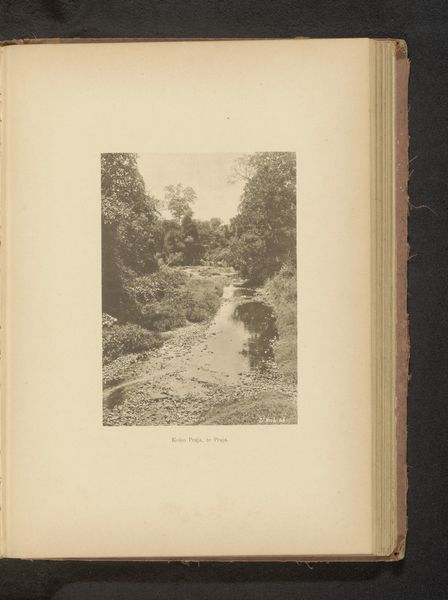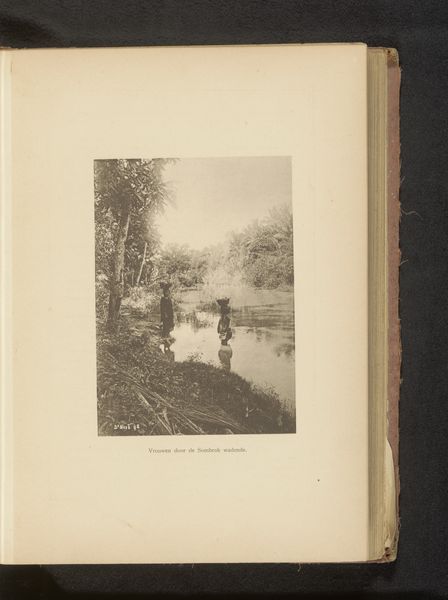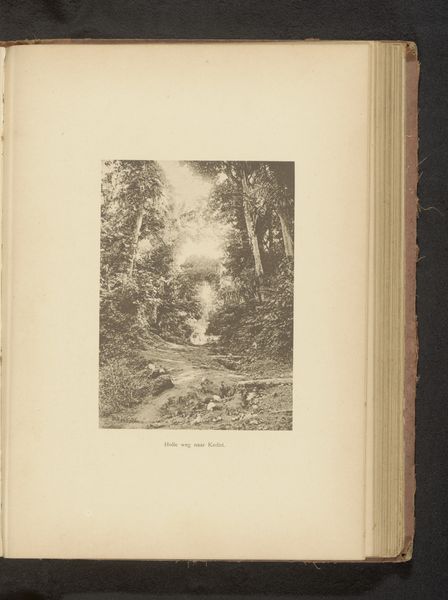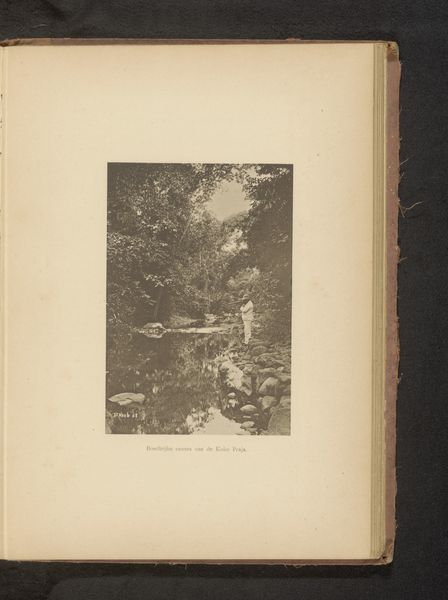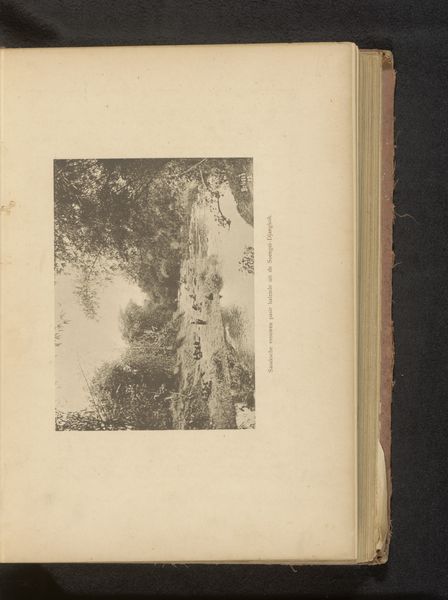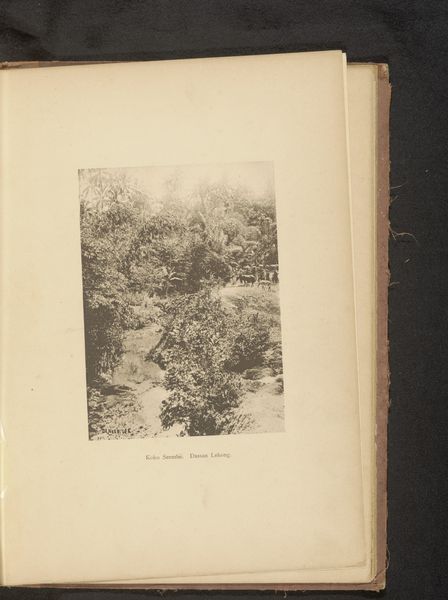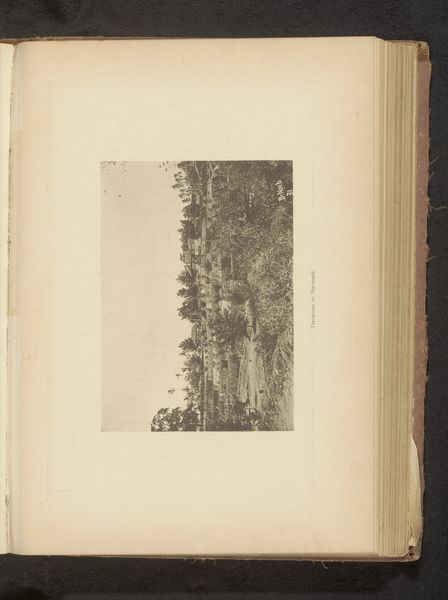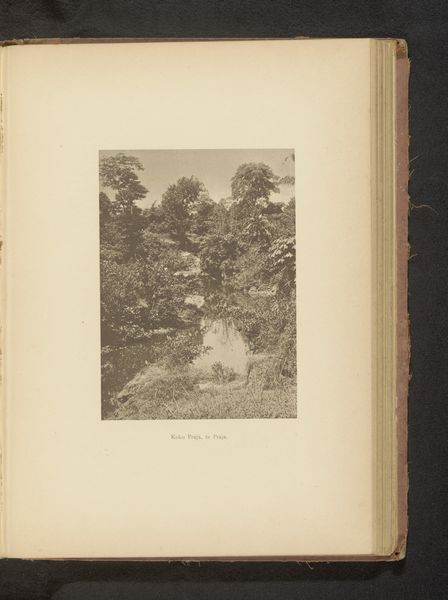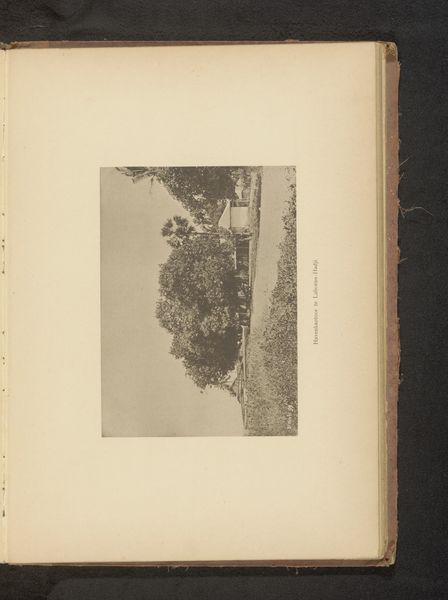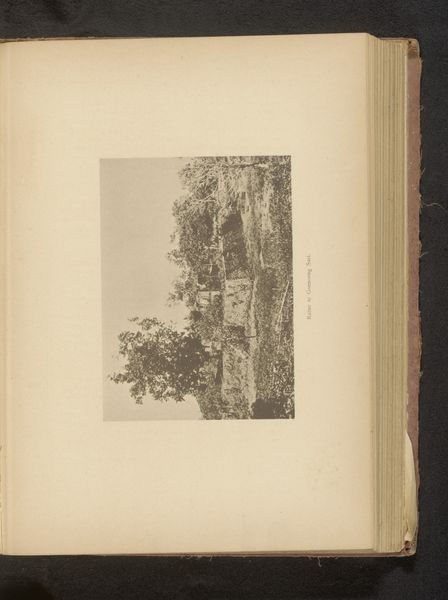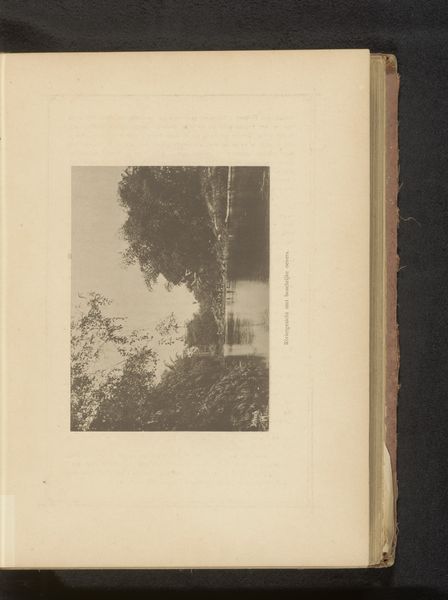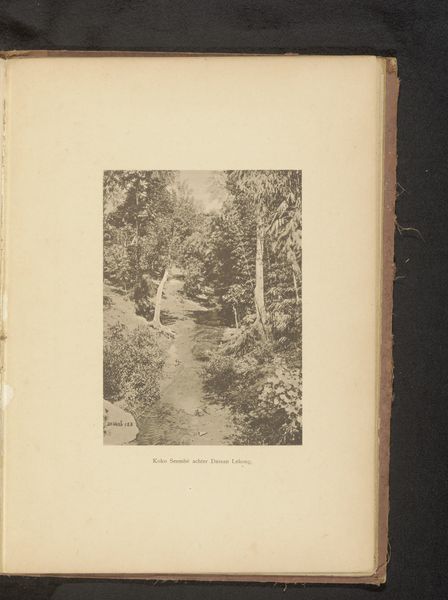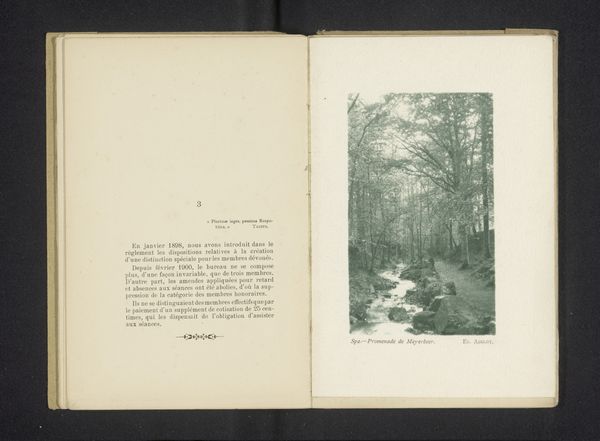
photography, gelatin-silver-print
#
landscape
#
river
#
photography
#
gelatin-silver-print
Dimensions: height 165 mm, width 119 mm
Copyright: Rijks Museum: Open Domain
Curator: Let's explore this gelatin-silver print titled "Gezicht op de rivier met op de oever onbekende personen," or "View of the River with Unknown Persons on the Bank," created before 1897 by Christiaan Johan Neeb. What's your initial response to this image? Editor: My first thought is one of calm. The silvery tones create a quiet, almost ethereal feel. It seems smaller than I expected—like peering through a historical window. Is it capturing daily life along this river, whatever its name may be? I am wondering who the persons in the river are and their purpose in this space and time. Curator: Indeed. And beyond a literal record, it’s very much steeped in the conventions of Orientalism. Note the way the anonymous figures on the river bank and in the shallow waters become part of the broader tableau of an exoticized "other" landscape, the people existing as props. We should consider, though, whether “Orientalism” as a lens may impose too much knowingness when thinking about photographs of the period in regions such as Java, where Orientalist visual tropes were absorbed, subverted, re-enacted, and re-circulated, though the identity of the subjects here remains unresolved. Editor: Right, that leads me to wonder about Neeb's photographic process here. Gelatin-silver prints offered a degree of crisp detail which he clearly utilizes, however, at a much different purpose that high art images of his contemporaries. His work makes me ask about its mass dissemination at the time, the accessibility for travelers maybe? Curator: The repetitive symbolism definitely leans into the aesthetics of a romanticized faraway land and the print emphasizes the visual signs used to recognize a culture far away from the Western eye of the viewer at the time of dissemination, what in modern day would make us weary of exoticism. I think about the cultural expectations it set, the perpetuated notions about these foreign settings and the relationship these might had with Western expectations. Editor: I see your point. Reflecting on the piece, I'm left pondering its role in mediating experience and understanding faraway lands for a specific type of European viewership at that time. Curator: And I’m more aware now of how much loaded history can be carried even in seemingly neutral, picturesque scenes, prompting to constantly ask the nature of that “truth” shown on any image in every possible context.
Comments
No comments
Be the first to comment and join the conversation on the ultimate creative platform.
